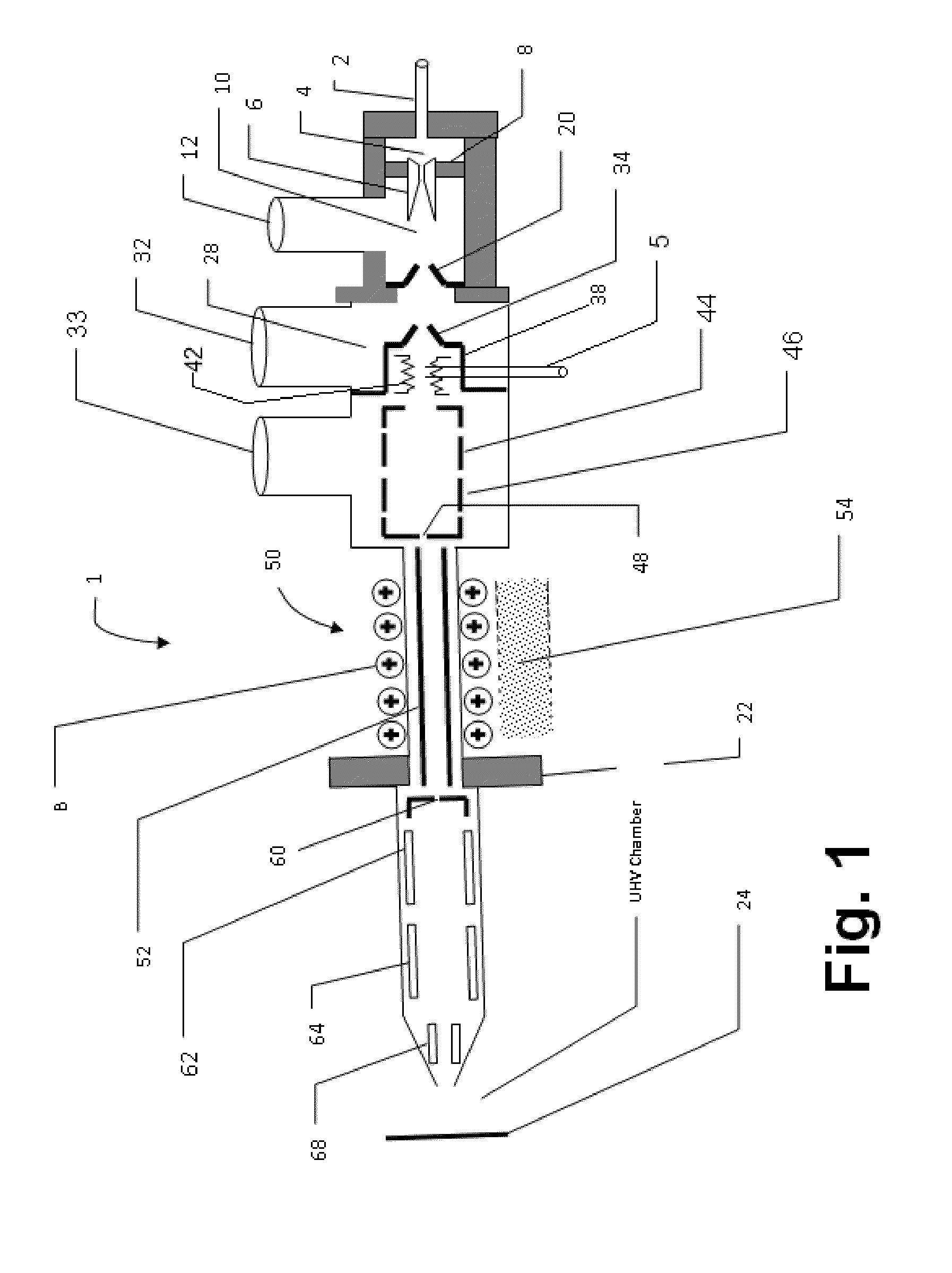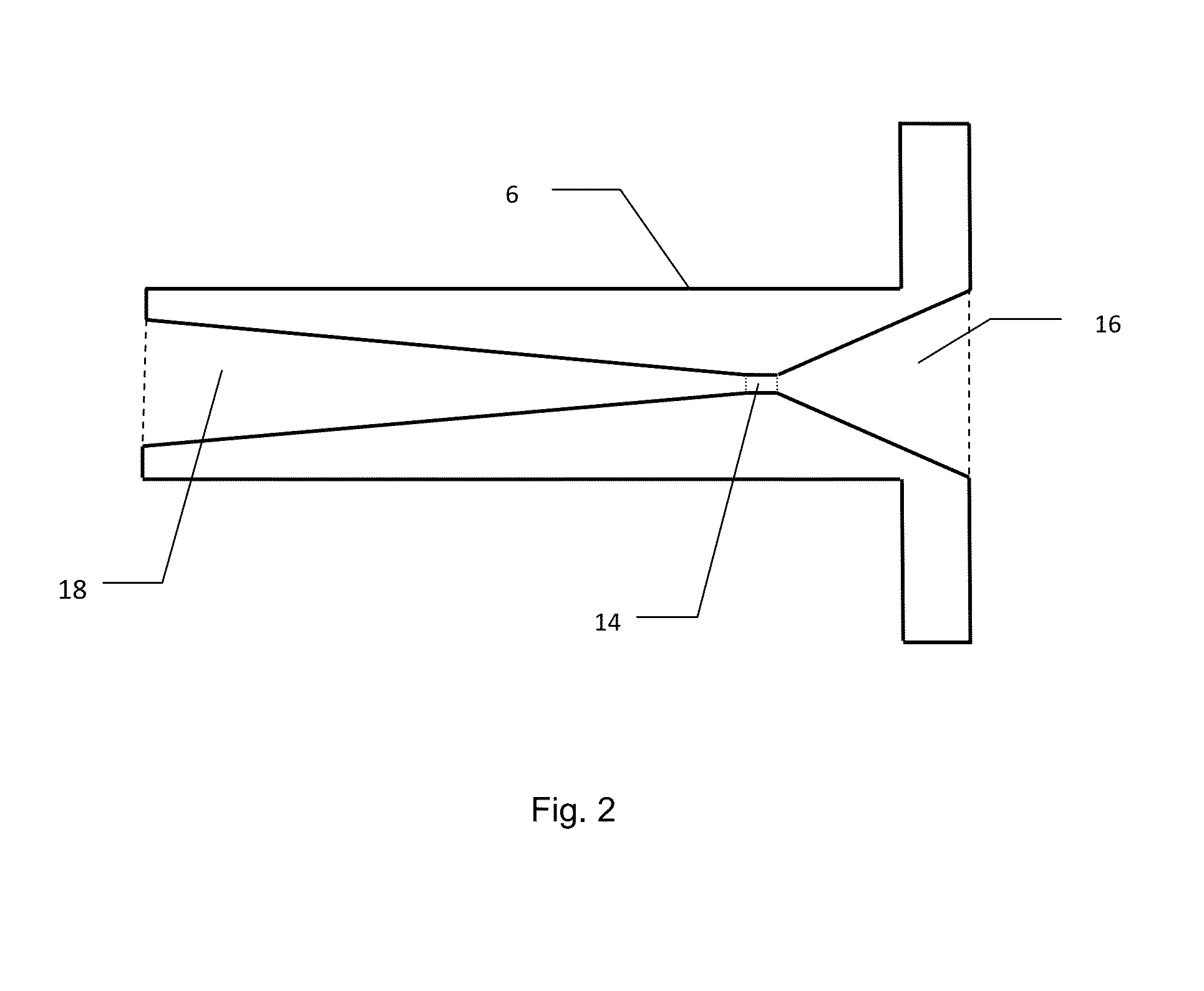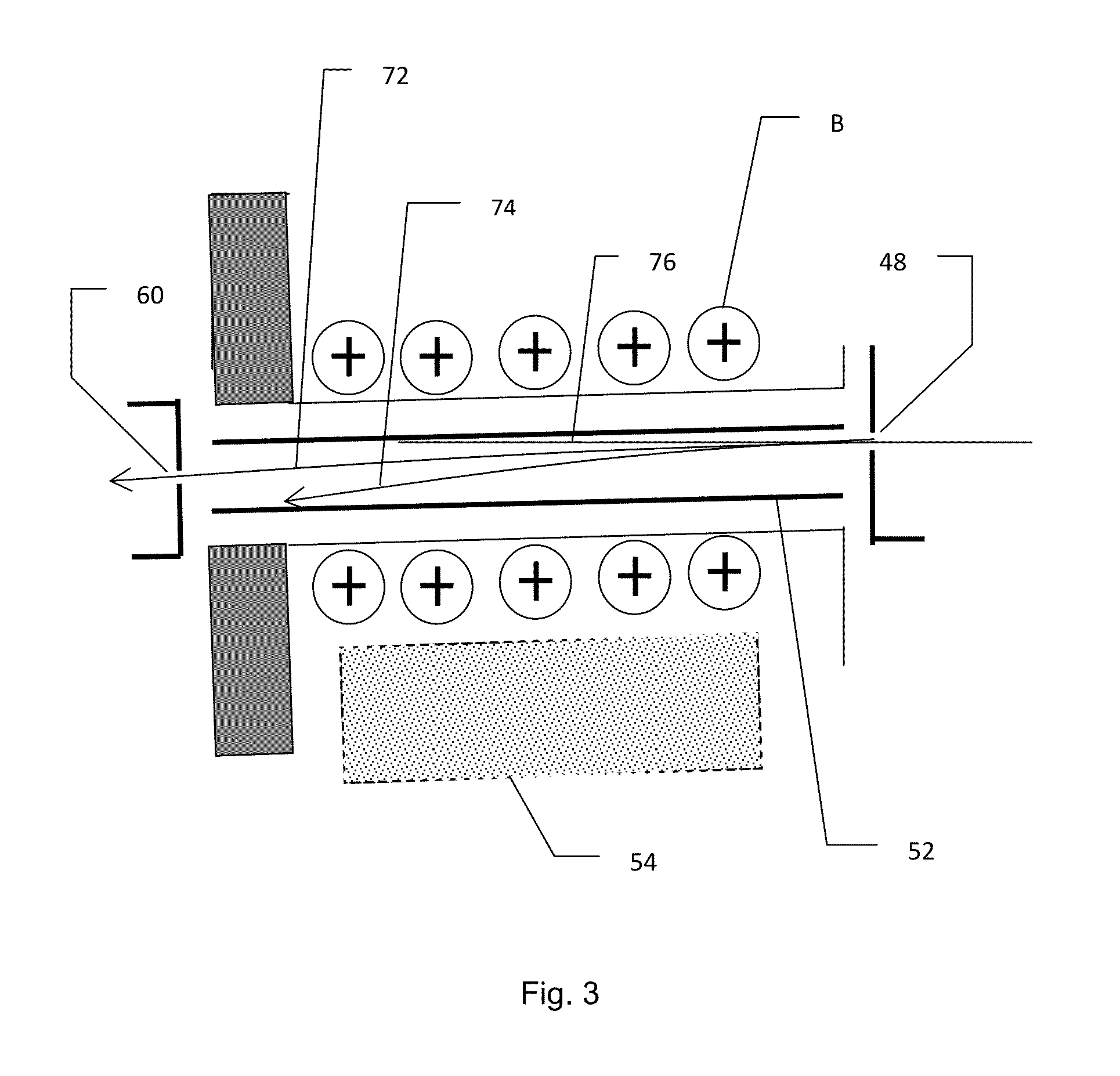Switchable ion gun with improved gas inlet arrangement
a technology of ion guns and gas inlets, applied in the field of ion guns, can solve the problems of inability to produce argon ion beams with sufficiently low energy, loss of chemical and molecular information about the surface, and inability to produce argon ion beams, etc., and achieves the effects of simple magnets, small range, and flexible tuning
- Summary
- Abstract
- Description
- Claims
- Application Information
AI Technical Summary
Benefits of technology
Problems solved by technology
Method used
Image
Examples
example 1
[0112]To illustrate its effectiveness, data was obtained from using the ion gun according to the invention to etch a PTFE polymer sample “as received” which had an XPS spectrum showing the C—F2 fluorocarbon bonds of the sample together with a layer of “adventitious carbon” contamination on the surface as shown in FIG. 5A. Attempts to remove this surface contamination with a conventional argon ion beam (200 eV) caused chemical damage to the sample as shown in FIG. 5B. However, when etching the surface with the ion gun according to the invention in cluster mode (source energy 4 keV; minimum cluster size=200 atoms; max energy per atom=20 eV) etching with a cluster beam resulted in a clean undamaged spectrum as shown in FIG. 5C.
example 2
[0113]To illustrate its effectiveness for etching a multilayer substrate of different materials (e.g. both soft and hard materials), an operation of the ion gun according to the invention in both cluster and atomic mode was used to create a depth profile through a polystyrene film (approx. 200 nm thick) on an indium tin oxide coating (approx. 200 nm thick) on a piece of glass (i.e. silicon dioxide) while performing XPS analysis of the substrate. FIG. 6 shows XPS signals for the elemental components of the multilayer against the depth profile. The profile was started with the ion gun operating in cluster mode (to the left of the dotted vertical line in FIG. 6) to remove the “soft” polystyrene film with a minimum of chemical damage, as shown by the presence of phenyl ring satellite (C pi-pi*) throughout the film. This would not be possible using an atomic beam without causing significant sample damage. Once the interface is reached the gun is switched over to atomic mode (to the right...
example 3
[0114]Referring to FIGS. 7A-C there are shown XPS results for depth profiling on another very delicate sample, a fluoropolymer film on a PTFE substrate using the ion gun in its cluster mode with the same settings as Example 1. It is well known that PTFE is easily damaged by ion beam bombardment. As shown in FIG. 7A, before etching, and during the depth profile, a well resolved fluoropolymer spectrum is observed showing the details of the sample chemistry. After etching through the film, a spectrum as shown in FIG. 7B of the undamaged PTFE substrate is observed showing only the C—F2 bonded carbon of PTFE, with no peaks corresponding to any broken C—F or C—C bonds. The depth profile shown in FIG. 7C shows the transition through an undamaged fluoropolymer film into an undamaged PTFE film.
PUM
| Property | Measurement | Unit |
|---|---|---|
| Angle | aaaaa | aaaaa |
| Angle | aaaaa | aaaaa |
| Magnetic field | aaaaa | aaaaa |
Abstract
Description
Claims
Application Information
 Login to View More
Login to View More - R&D
- Intellectual Property
- Life Sciences
- Materials
- Tech Scout
- Unparalleled Data Quality
- Higher Quality Content
- 60% Fewer Hallucinations
Browse by: Latest US Patents, China's latest patents, Technical Efficacy Thesaurus, Application Domain, Technology Topic, Popular Technical Reports.
© 2025 PatSnap. All rights reserved.Legal|Privacy policy|Modern Slavery Act Transparency Statement|Sitemap|About US| Contact US: help@patsnap.com



